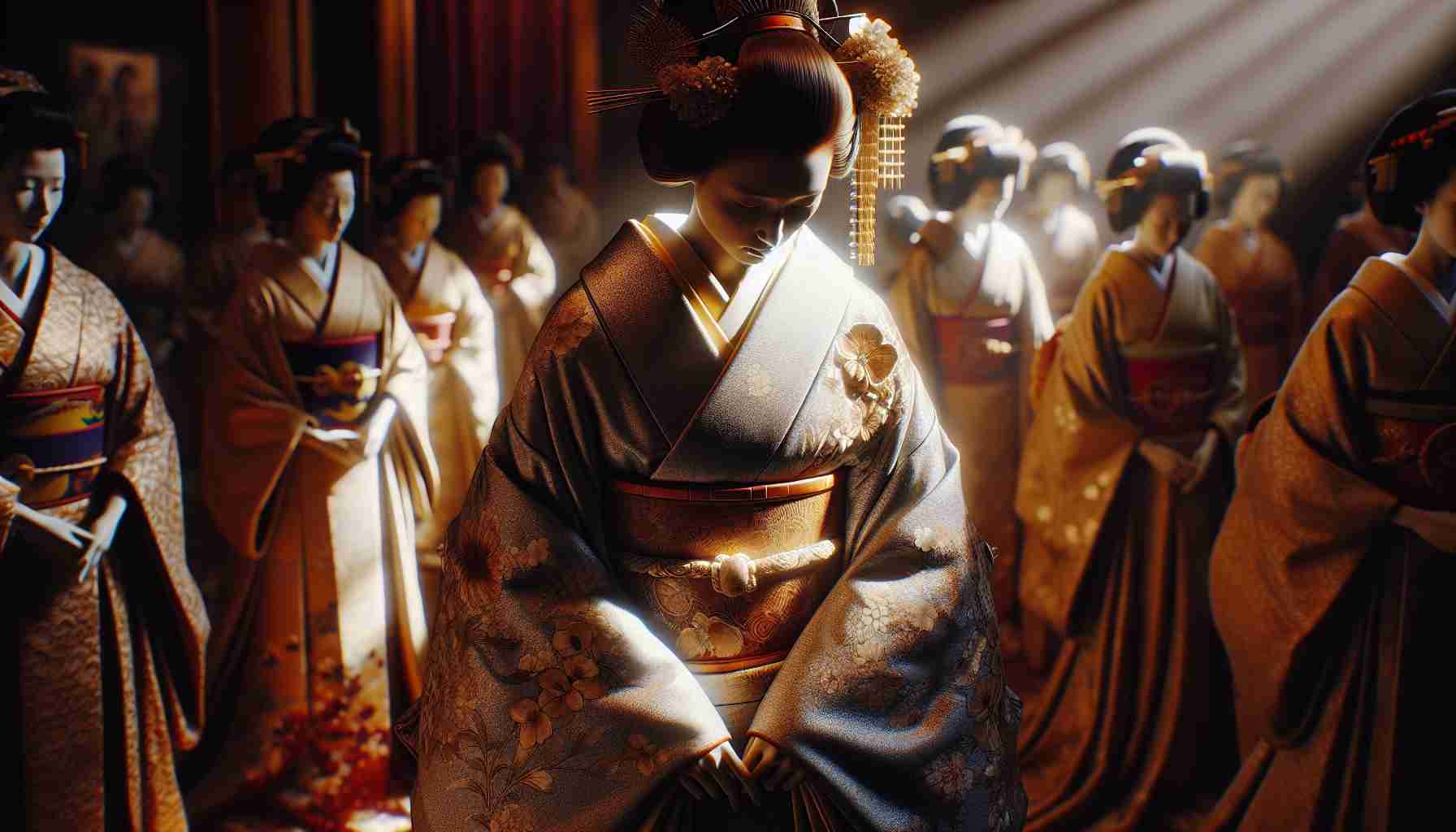A Captivating Experience in Kyoto
Recently, model and talent Laura, based in Los Angeles, took to her social media to capture a moment of cultural significance. On January 14, she shared a beautiful image of herself clad in a pale yellow kimono, celebrating the “Hatsugama,” a traditional tea ceremony marking the New Year in Kyoto.
As she arrived at the venue, Laura was warmly greeted by her teacher, whose radiant smile instantly brightened her day. Stepping into the tea room, she found herself enchanted by the sight of women dressed in elegant, softly colored kimonos, which only heightened the beauty of the occasion. The sequence of events unfolded with thin tea, thick tea, and kaiseki cuisine, immersing Laura in a deep appreciation for the artistry of the ceremony.
Amidst this serene setting, a moment of reflection struck Laura while witnessing her mentor prepare the thick tea. She felt a profound sense of the fleeting beauty of life, prompting tears to flow down her cheeks. As she concluded her post, she expressed heartfelt gratitude for being shown a new perspective on life’s beauty.
Her post received an outpouring of admiration from followers, who complimented her elegance and the stunning kimono that perfectly complemented her grace.
Discover the Deep Cultural Significance of Kyoto’s Hatsugama: A Journey Beyond the Tea Ceremony
The Art of Hatsugama in Kyoto
Kyoto, Japan’s ancient capital, is synonymous with cultural richness and historical significance. One of the most captivating experiences that reflect this essence is the Hatsugama, a traditional tea ceremony that marks the New Year. This ceremony not only serves as a ritual of welcoming the new year but also embodies the artistry and philosophy of Japanese culture.
Understanding the Hatsugama Ceremony
The Hatsugama, or “first kettle,” is a highly stylized tea ceremony held in January. It symbolizes new beginnings and the renewal of spirit as participants partake in the ceremonial serving of tea, usually featuring two types: thin tea (usucha) and thick tea (koicha). Each type is crafted with meticulous attention to detail, reflecting the profound respect for nature and the fleeting moments that life offers.
Pros and Cons of Participating in Hatsugama
Pros:
– Cultural Immersion: Engaging in a traditional ceremony deepens your appreciation for Japanese culture and its aesthetics.
– Mindfulness: The slow pace and meditative aspects of the ceremony promote mindfulness and reflection.
– Rich Culinary Experience: The ceremony often includes kaiseki cuisine, showcasing seasonal ingredients and the artistry of Japanese culinary traditions.
Cons:
– Limited Accessibility: Traditional tea ceremonies may require advance bookings and can be hard to find, especially for tourists.
– Cultural Barriers: Those unfamiliar with Japanese customs may find it challenging to fully grasp the subtleties of the ceremony.
Use Cases of Attending Hatsugama
Attending Hatsugama is not merely for tourists; it serves various purposes:
– Tourism and Travel Enthusiasts: Those seeking an authentic Japanese experience.
– Cultural Scholars: Individuals studying cultural traditions and their impact on society.
– Mindfulness Practitioners: People looking for a serene experience to practice meditation and introspection.
Limitations of the Hatsugama Experience
While Hatsugama is a beautiful and profound experience, its limitations include:
– Language Barrier: Many ceremonies may not offer explanations in languages other than Japanese.
– Cost: Participating in such ceremonies can be expensive, given the elaborate preparations and skilled tea masters involved.
Trends in Cultural Experiences in Kyoto
There’s a growing trend of travelers seeking immersive cultural experiences, especially post-pandemic. Hatsugama stands out as a unique offering where participants can step back into time and appreciate traditions that have shaped Japanese society for centuries.
Conclusion
Participating in Hatsugama is not only a tribute to Japan’s rich heritage but also a journey into mindfulness, beauty, and the art of tea. As seen through individuals like model Laura, who embraced this experience with a heart full of gratitude and reflection, these moments highlight life’s transient beauty.
For more about cultural experiences in Japan and upcoming events, visit Japan Travel.
